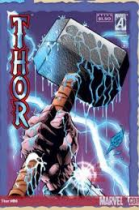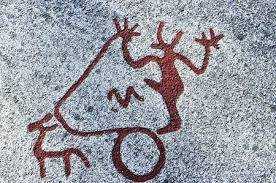
At exactly 12 midnight last night, the wire broke on the Thunder icon that has hung over my bed for the last 25 years, and the whole heavy panel of painted wood slid down the wall to where I lay sleeping below.
If it had clobbered me on the head, it would have been painful, at very least, if not downright injurious. Instead it wedged neatly between the edge of the futon and the wall, and I woke to the sound of rattling bed-slats.
To the best of my knowledge, that's the first time I've ever woken up with a god in the bed.
All's well that ends well: I'm fine, the painting's fine. I put things right, read for a while, and go back to sleep.
Moral of the story:
-
 Mr. Posch, That is indeed why one of Apollon's epithets is, "Loxias"... "The Oblique". Glad the Deathless Ones saw fit to spare
Mr. Posch, That is indeed why one of Apollon's epithets is, "Loxias"... "The Oblique". Glad the Deathless Ones saw fit to spare





















